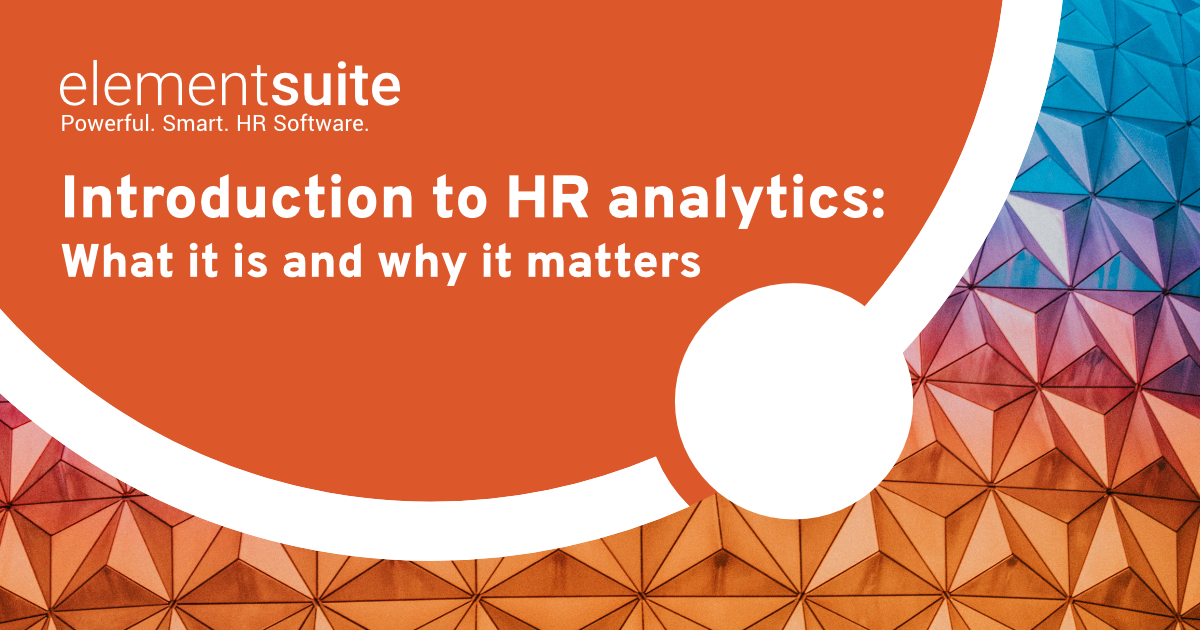If we look back at the pre-pandemic HR function, intuition and gut-feeling often drove decisions. Yes, there was basic reporting on the standard HR metrics, but the insights gleaned were limited.
Though, in the wake of the pandemic, something shifted. HR was expected to provide insights beyond just the basics. And this was when the data-driven HR started to become mainstream.
We’re now seeing an array of industries leveraging data-driven solutions to transform their organisational practices; Retail, Hotels, Restaurants, Manufacturing, and Finance are all beginning to reap the rewards.
Take for example the hospitality, retail, and manufacturing sector: They are using predictive models to better understand their labour needs and to forecast future workforce trends. By combining operational data with HR data, they can accurately predict the number of employees needed and adjust their hiring plans accordingly.

Sam Buckley, Head of Sales at elementsuite
But as Sam Buckley, Head of Sales at elementsuite explains: “How do I know that have the right people in the right place at the right time, if I don’t know anything about my workforce?“. That’s where data-driven HR comes in.
By understanding the availability, skillsets and preferences of their existing employees, HR in these industries can create a flexible workforce that can shift to accommodate seasonal demands. Knowing who is available at any given time can help managers decide where best to deploy staff for maximum effect; ensuring customer expectations are met, while minimising labour costs.
And if we zoom in on the Finance sector, while this industry may already have established data infrastructures in place due to the nature of the industry – by combining performance and learning data with core HR data, the insights that can be gained become exponentially valuable.
For instance, Sam Buckley, Head of Sales at elementsuite explains: “We have seen a massive trend in people looking at talent pipeline and succession planning to ensure that if, for example, the CTO leaves, they have someone to fill that role. By combining this data, organisations can identify the right talent to invest in, the gaps they need to fill and where best to place training opportunities.”
But this isn’t the only benefit of a data-driven HR function. Below we take a look at some other benefits of data-driven HR:
Better Decision Making
With access to more accurate and up-to-date data, organisations can make better-informed decisions when it comes to hiring, training and retention. And when you have access to real-time data on your workforce, you can make faster and more accurate decisions. This is especially beneficial in a fast-paced environment such as retail or hospitality.
Starbucks 23.5 Degrees is a great example of this in practice. By utilising data-driven HR strategies, they were able to accurately use their HR data to influence short-term and long-term plans.
Become More Informed On Employee Performance
By gaining access to data on individual employee performance, you can make more informed decisions when considering promotions or succession planning.
But when it comes to succession planning, Sam explains that “you need to be asking the employee what they want, and whether they want to become a manager. You also want to know what their peers think of them by gathering peer recognition data.”
A More Diverse and Inclusive Workplace
With research proving that organisations identified as more diverse and inclusive are 35% more likely to outperform their competitors, understanding the diversity of your workforce is key. And how do you do that: with the power of HR data.
“You need to be honest with your data. Get the raw data out and track it”, Sam advises. With this data, you can identify areas for improvement (such as equalising gender pay) and create a more diverse and inclusive workplace.
Improved Hiring and Retention Practices
Data-driven HR doesn’t just benefit organisations in times of peak demand. It’s also becoming an important tool for improving hiring and retention practices. By gathering data on job candidates, such as their skillset, experience and previous performance reviews, organisations can create more accurate job profiles, resulting in a better fit for the position. There is also the potential to use this data to identify gaps in your current workforce and plan hiring accordingly.
And when it comes to retention, data-driven HR can provide valuable insights into why employees are leaving. This could be anything from pay discrepancies to a lack of job satisfaction. But with this data in hand, organisations can then take the necessary steps to retain their best talent and remain competitive in today’s market.
The First Steps Towards a Data-Driven HR
From retail to finance, hospitality to manufacturing, data-driven HR is transforming industries by providing organisations with the insights they need to remain competitive in today’s market.
So if you want your business to remain ahead of the game and add more business value, leveraging data should be at the top of your agenda.
But as Sam explains: “The biggest challenge is knowing where to start. Understanding where your remit fits into the organisations overarching goals is key. Is the company in growth mode? Is it in survival mode? These are all going to drive a very different data set.
If you are in growth mode you are going to want to put bums on seats quickly. You want the time to hire to be as short as possible. You want the quality of those candidates to be incredibly good. Starting with that is always going to be key and is going to be the hardest point.”
He continues, “Getting the data can also be the second hardest. If you don’t have a HR system, or you have multiple systems and no central place, it’s quite difficult. If you have a system like elementsuite then great. But if not, you need that input from every division.”
Understanding Ethics
And then you need to be thinking about the data and understanding any ethical considerations.
“GDPR and seeking consent from employees on processing and storing data is very important. And it’s hard to do that without a system, as the data that you keep should categorically be safe and secure. So if you are looking at a platform, make sure you look at its ISO accreditations.”
He continues, “And limit the amount of data you send anywhere. While you can export data in elementsuite, our first port of call is for that data to be modelled and reported within elementsuite so that it is behind a security layer, vs emailing a payslip or a confidential letter – which we all know could be intercepted.”
Technology is Here To Help
With the advent of technology growing faster than ever, the data-driven HR function is no longer the future, it is the present. And by leveraging the right technology, organisations can unlock the insights they need to remain competitive in today’s market and create a better workplace for their employees.
“To be agile in this new world, good data is key. One way to obtain good data is to have single-code line software. This means there is no lag in data and no redundancy. That’s what a good HR system can provide you“ Sam explains.
He continues, “You want HR software that will predict where you need to go before you get there, and alert and drive certain actions based on certain thresholds or data sets. For instance, predictive analytics may tell me that in 3 months the CTO may leave. So let’s start hiring and training some of our employees underneath to fill that role.”
This is exactly what elementsuite provides organisations with – a single-source of truth for all their HR needs. With features such as predictive analytics, performance monitoring, and employee engagement tools, elementsuite is transforming the way organisations work tomorrow – enabling them to unlock valuable insights and remain competitive in today’s market.
So if you want to take your HR function to the next level and reap the rewards of a data-driven approach, it’s time to get on board with elementsuite.
Book a demo to see how you can start unlocking the insights you need for the future of your workforce.




